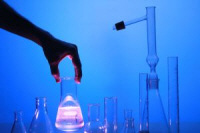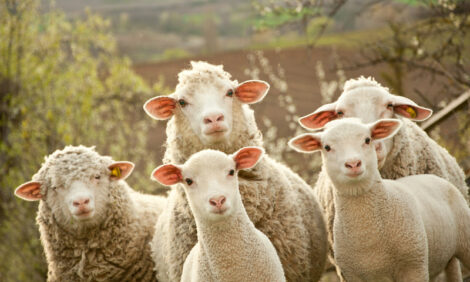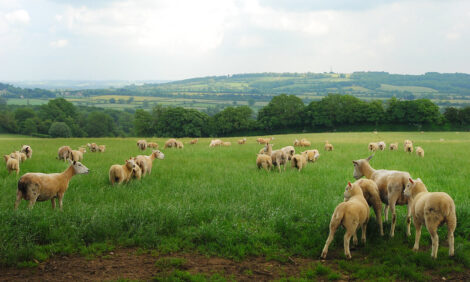



Secrets of the Genome: a New Bovine Story
The recent sequencing of the bovine genome has opened a window to a whole new way of perceiving a cow. Soon, it may change the meaning of cattle farms as well, writes Adam Anson, TheCattleSite.
Genetics provide an entirely new way to interpret the world around us. The compounds of DNA are nature's most complete description of itself. Once we learn to read them, scientists used to say, we will be able to understand life at a much more profound level. Well now we can. However, it is no easy task.
Recently, in a project that took over six years, involving more than 300 scientists from 25 countries, an annotated sequence of the cattle genome was developed for the first time. The consequence of their work will undoubtedly make historic changes throughout the livestock industry.
The researchers used the complete sequence of genomes from a single Hereford cow and comparative genome sequences for six more breeds to complete their project. It has been estimated that the genome contains approximately 22,000 genes and 2.8 billion nucleotides. This is a lot of information to decipher, but many ask: what exactly can we understand from it all?
Genomes not only tell us what animals essentially are, but they also give us an insight into their entire history, how it has evolved to be as it is and how it has adapted to its ever-adapting environment. We can also discover just how similar they are to ourselves.
By studying the bovine genome against the already-sequenced human genome the researchers discovered that, during evolution, domesticated cattle and other ruminants diverged from a common ancestor that gave rise to humans about 95 million years ago. Today, humans and cattle still hold 80 per cent of the same DNA. There is also an evident change in the cattle genome that researchers believe reflects the humans domestication of wild cows some eight to ten thousand years ago.
Scientists say that several breeds showed evidence of this level of selective breeding. Whilst many are worried about the health implications of a decreased gene pool, it has now been shown that the genetic diversity in cattle is actually greater than that in humans.
Researchers were also surprised to find that duplicated segments in the bovine genome appear to have played a major role in the rearrangements of chromosomes, as they have in humans. These rearrangements seem to be particularly important to cattle biology because they affect genes involved in immunity, lactation, metabolism and digestion. Ultimately, this is likely to explain how cattle have become so good at what they do: convert forage to meat, milk and energy.
The researchers said observation suggests that species-specific changes in genome organisation and gene regulation may help tailor the functional components of milk to the specific needs of newborn mammals. The observations also add to the mounting evidence that milk contains ‘innate immune’ proteins that may be important for gut protection and development in the young as they suckle and the health of the mammary gland.
* "Undoubtedly, the bovine genome sequence and haplotype map will revolutionize the beef and dairy industries." |
|
Genome report
|
Understanding how this process works at a genetic level helps us to manipulate it at a real level. The information not only helps people to understand what makes a cow so good at what it does, but it also allows them to make it even better at what it does. Consequently, producers of the future will benefit hugely from this information, using it to create greater and greater efficiency. Whilst it can be used for natural selection, it seems that it will be likely -- especially in the US -- that animals will soon be genetically modified for food.
Scientists who promote the advantages of genetically modified animals say that the bovine genome will help create greater disease resistance, which will reduce current dependence on antibiotics and veterinarians. Meat tenderness, marbling and flavour will increase, leading to greater product value, whilst input costs will be reduced as efficiency increases in the face of quicker maturing cattle, and a greater ruminant processing.
As efficiency of livestock production increases, environmental impacts decrease and overall global production will have a greater chance of keeping up with an exploding overall global demand. The repercussions of future research may even help us to refine our own race by understanding the multitude of diseases which affect each and every one of us throughout our lifetimes. It has been reported that medicinal companies are already showing interest in the information. The fact that cattle are genetically more similar to humans than they are to mice means that they would make better subjects for laboratory tests. A sentiment that many are bound to abhor.
The final report, which was published in two science journals concluded that although these collective studies generated a multitude of discoveries, it is "only the beginning of a much larger body of future research that will be catalysed by the availability of the bovine genome sequence and haplotype map."
The genome sequence will be refined, reanalyzed and integrated with biological data in ways we can not yet imagine to examine fundamental questions relating to the linkage between genes and cattle phenotypes, the reasons for the evolutionary success of ruminants, the history of cattle domestication, and the mechanisms of mammalian evolution, to name but a few.
"The availability of very large well managed cattle populations and sire based breeding systems will accelerate the discovery of genes contributing to complex traits of direct relevance to humans." It says. "Undoubtedly, the bovine genome sequence and haplotype map will revolutionize the beef and dairy industries."
Yet despite of all the benefits that such a future can promise, the unnatural, unethical and potentially harmful implications of future genetic management cannot be forgotten, nor underestimated. Just because something can happen does not mean that it should, or that it has to. The perfect cow is not all that is seems when envisioned by those who regard income more highly than ethics. In many of our eyes this perfect cow may not resemble a cow at all.
May 2009


